5 Tips for Engaging With Your Community in a New Location


By Cris Burnam
There’s a lot of strength behind big brands. They can set up shop (or stock the shelves) in almost any market, and consumers know exactly what they’re getting when doing business with that brand.
Take Apple, for example. When consumers see the monochromatic logo, they know what to expect: a product that’s made well and easy to use. Coca-Cola has a somewhat similar advantage in the marketplace. As do Ford, Budweiser, Subway and General Electric.
But that’s not to say there isn’t value in being a local business. By and large, consumers want to support their local economy. They see small businesses as customer-focused, reliable, consistent, committed and just plain easier to do business with.
Obviously, you can’t do much to convince a community that you’re local when you’re not. It would be foolish to even try. But you can involve yourself in the community and in the activities that support that community. In fact, 82 percent of consumers consider the corporate social responsibility (CSR) efforts of a company when making purchase decisions.
Chipotle understood this when it aligned itself with the local food movement. As part of its “Food With Integrity” campaign, the fast-food chain committed to using 10 million pounds of local produce throughout its restaurants in 2012. It also supported family farms that raise animals naturally without antibiotics or added hormones.
Get involved
You don’t have to roll out a large-scale campaign like Chipotle to forge connections with the local community. Here are five key techniques you can utilize:
- Treat every new city like it’s your own. Your main store may be in a different city or state, but don’t let that prevent you from building valuable connections in your new “home.” You want to be seen as part of the community, not separate from it.
- Involve yourself in the conversation. Take the time to get to know your new community and its needs. If the area is lacking a park, needs help getting a festival off the ground, or is lacking proper supplies in its public schools, for example, offer assistance in those arenas. Pinpoint what people want, and find a way to help them get it.
- Align your involvement with your interests. It’s hard to be passionate about CSR efforts when they don’t align with your interests. Trust me, your indifference will be quickly recognized by the community. So make sure your involvement aligns with what you personally value. For example, if you’re passionate about helping children, integrate it into your core business model and find a way to help children in need in every community you operate in.
- Relate your efforts to your business. Along with your personal interests, your efforts should relate to your industry, as well. However, you can usually find something you’re passionate about that naturally fits into your business model. If you’re a paper company, for instance, consider making recycling part of your banner. You want it to make sense.
- Make your involvement part of your story. It may sound self-serving to tell consumers about all the good you’re doing for the community. But if you don’t, who will? Let the community know your values and how they shape your efforts to improve your surroundings, and find a way to let your customers (and potential customers) know how their patronage at your business comes full circle.
Bottom line: When you involve yourself and your business with the community, you set yourself apart from the competition. But you also increase trust and loyalty in your customer base — two things that can significantly boost your bottom line.
Image credit: Flickr/themastershakesignal
Cris Burnam has been working in the self-storage industry since 1987. He has served as president of StorageMart since founding the company with his brother Mike Burnam in 1999. Cris grew StorageMart from a single self-storage facility into the world’s largest privately owned self-storage company with 149 locations across the U.S. and Canada. Cris was named a 2014 EY Entrepreneur of the Year in the Services and Real Estate category — one of the highest honors an American entrepreneur can receive. Connect with StorageMart on Twitter.
Drought, California Agriculture and Water Efficiency: Why Farmers Must Adapt
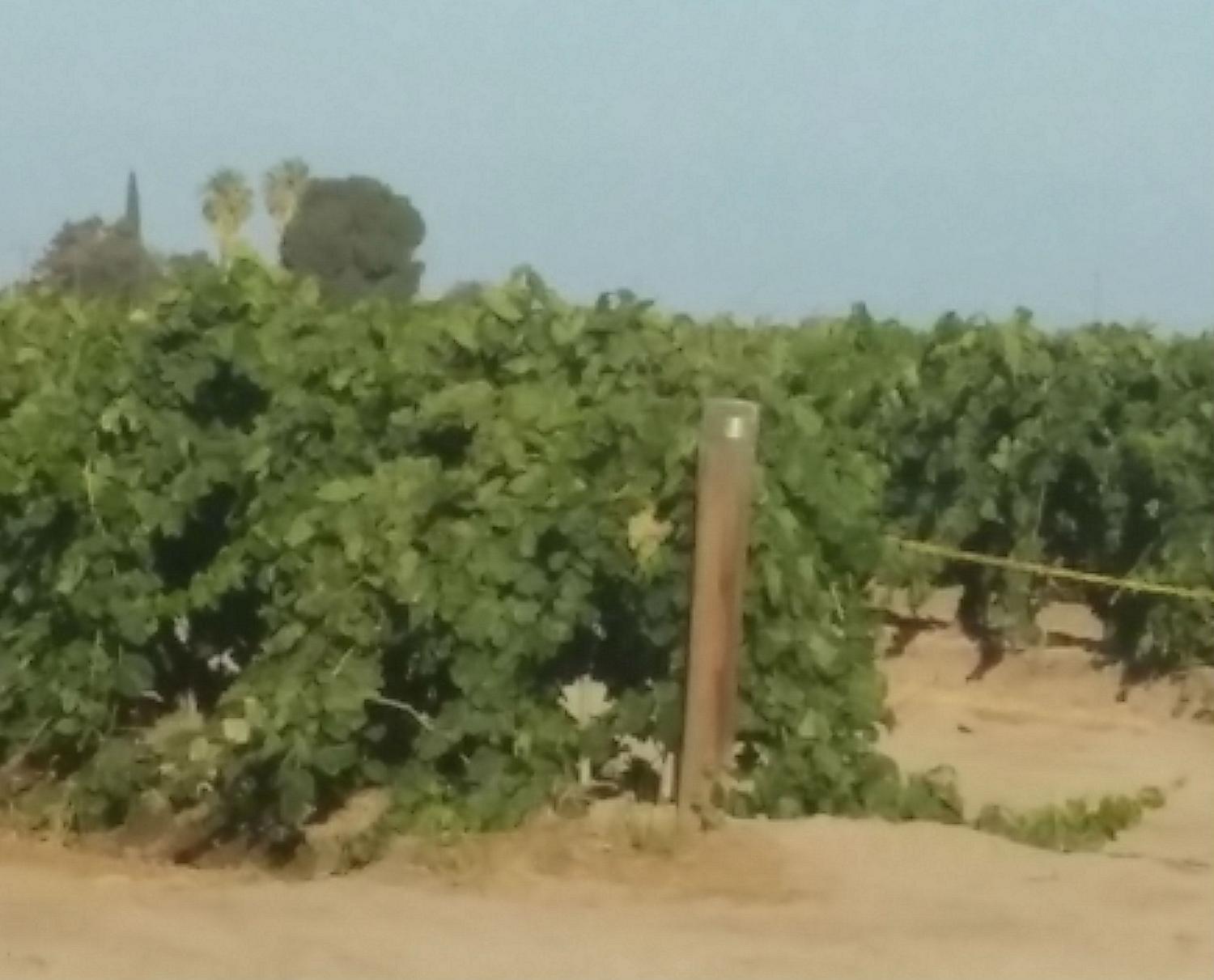

The entire state of California is in a drought. A big part of the state, including the fertile Central Valley, is experiencing the worst category of drought, exceptional. California supplies much of the fruits, vegetables and nuts the nation eats. In inland areas such as the Central Valley, as well as the combined Sacramento and San Joaquin valleys, agriculture truly rules.
While people in Southern California and the Bay Area are largely insulated from the effects of the drought, people in the Central Valley are being hit hard. Some wells in the town of Easton, the small farming community in Fresno County where I was raised, are going dry; and two businesses have closed as a result. Meanwhile, farmers are resorting to over-pumping groundwater. They have no choice. They want to survive. America wants to eat.
Agriculture takes up 80 percent of the state’s water supply. Some crops need more water than others. Tree crops, for example, need more water than vineyards. Almonds are one tree crop that is experiencing great growth, fueled in part by studies that show the health benefits of eating almonds and past drops in the price of raisins. As a result, almonds are California’s largest export; state farmers grow 80 percent of the world’s supply, and 99 percent of all almonds grown in the U.S. hail from California. However, the drought is certain to affect the almond industry. As an opinion piece by Market Watch points out, “This unprecedented drought threatens to slam the brakes on one of the state’s fastest-growing crops and biggest moneymakers.” When the 2014-2015 crop goes to market next year, consumers will certainly be hit with higher almond prices.
Drought, water efficiency and California agriculture
The California drought highlights the need for more efficient uses of water by the agricultural sector, including the almond industry. No one knows when this drought will end, but even when it does, Californians, and farmers in particular, must remember that California is prone to droughts. Another drought will come along. The key for the survival of California agriculture is for farmers to adapt. Developing ways to more efficiently use water will enable farmers to effectively cope with water shortages.
Water efficiency in the Central Valley is particularly needed for the very survival of the industry that put the place on the map. Without agriculture, the two-thirds of the state that make up the Central Valley would be the desert backwater it was when my great-grandfather came here from Armenia. According to the family story, when the train stopped in Fresno, my grandfather and the other Armenians on the train didn’t want to get off. They were quite shocked by the barrenness of the land. Irrigation water has turned this desert into fertile farmland.
During the past couple of decades, California farmers have already made strides toward becoming more water efficient. In 1990, more than two-thirds of the crops in California were flood irrigated, according to the Pacific Institute, a notoriously water-inefficient practice. But by 2010, only 43 percent were flood irrigated. From 1990 to 2010, the amount of California land irrigated with micro-sprinklers and drip irrigation increased from 15 to 38 percent. Gone are the days of my childhood when a kid could float on an inner-tube down a vine-row flooded with irrigation water. And that is good news. It proves that farmers have the ability to adapt.
Image: Author's own
Flip the Thinking on the Three Rs: Join the Reuse Movement
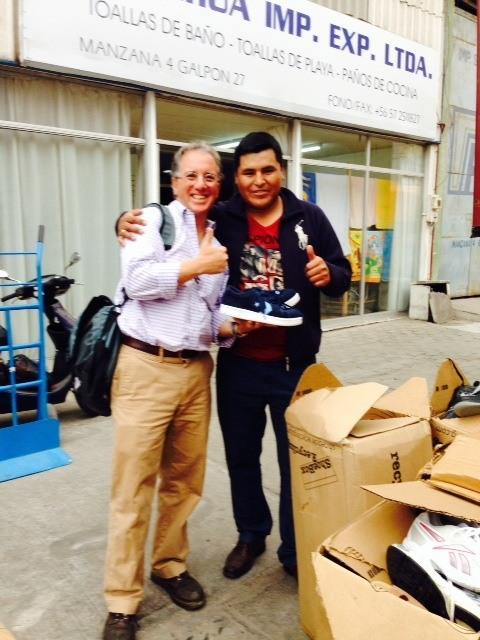

By Ira Baseman
Recently, there has been a lot of invigorating discussion from sustainable business leaders in the apparel industry about implementing take-back programs to recycle clothing and accessories. After all, it is estimated that more than 70 pounds per consumer, or nearly 22 billion pounds of clothing, shoes and accessories annually, end up in our solid waste stream -- representing 5 percent of landfills. To be sure, retailers and manufacturers are playing a strong role by raising awareness about this problem of overburdened landfills and encouraging consumers to become part of the solution. I want to elevate the discussion and challenge business leaders to consider a new model for recycling that is focused on reuse, unprecedented convenience and personal engagement that is meaningful and impactful. In my work, I see a new wave of conscious consumerism taking hold, and I like to refer to this as the 'reuse movement.'
The reuse movement is about making recycling personal. It is about creating and delivering an experience for consumers and a new (corporate social responsibility CSR) journey for retailers and other stakeholders. Each single, personal act of recycling creates local community benefits, such as reusing materials or turning them into new products, and it creates a global impact such as generating new jobs, connecting people through recycling and ultimately reducing waste.
For the retail industry, a new program within the reuse movement allows consumers to recycle clothing shoes, and accessories without leaving their homes – for free. Through a customized portal designed for the retailer, consumers are invited to simply box up their items, print out a free shipping label and place the box on their doorstep for pick-up by their mail carrier. Once recyclers ship their items for reuse, they are invited to their own environmental dashboard where they receive a personalized sustainability report, track the path of their recyclables across the world and share their success through social media channels to showcase their personal impact. For the recycler, this experience is personal, measurable and impactful. For the retailer/manufacturer, this is frictionless, traceable and builds a sustainability record that is easily deliverable to all stakeholders.
One such leader embracing this program in the reuse movement is Original Penguin. The company offers this opportunity to its consumers online and in-store (receipt promotions) with little to no labor impact, which showcases how the company is reducing its environmental footprint. Thus far, Original Penguin, has engaged its consumers in more than 20 states, which are all traceable back to each patron.
The reuse movement champions the concept that sustainability and economic development go hand-in-hand, by putting clothing and related items back into communities for reuse and resale. As a country, we generate 26 billion pounds of apparel, textiles and footwear annually, or roughly 82 pounds per U.S. resident. Yet only 15 percent is recycled; the remaining 85 percent ends up in landfills. I see this as a huge opportunity for consumers and companies to work together to reduce waste, while humanizing recycling and generating economic opportunity. The reuse movement is seizing this moment.
Reuse does not end with clothing being re-worn by others – it sparks economic opportunities across the globe for people who rely on textiles to fuel their entrepreneurial aspirations. I see this happening across the U.S. and around the globe. From artisans to new industries, reuse is having a profound impact and sparks new life into our material world and how we engage with it.
Overall, our company’s contribution to the reuse movement prevents more than 50 tons of materials from ending up in landfills every day. More than 5,000 partner organizations in the U.S. and more than 50 countries – artisans and businesses reuse materials. All of these gently-used items are reused in thrift stores and marketplaces around the globe, where more than 70 percent of the population depends on affordable, secondhand goods.
Despite the growing environmental movement by companies and consumers, most people in the U.S. are unaware their clothes, shoes and other items can be reused, resold and recycled, creating local economies and jobs both here and around the world. Yet, every day, I am experiencing this new wave of conscious consumerism – people are embracing the human connection of recycling through reuse. I am hopeful that there will come a day when we see consumers actively recycling clothes, shoes and accessories with the same frequency they do with curbside programs for recycled bottles, paper and aluminum. I think we are seeing the beginning of real change and we invite everyone to join the reuse movement.
Inspired by the mission of doing well and doing good in business, Ira Baseman is president of Community Recycling, a social-conscious, for-profit recycling company, which has championed the Reuse Movement. Community Recycling scales clothing recycling and reuse for people, while helping retail organizations build brand reputation and connectivity among their customers. As a result, Community Recycling engages more than 5,000 partner organizations in the U.S. and more than 50 countries in the Reuse Movement by reusing materials or turning them into new products, helping to grow local economies and provide jobs for people in the U.S. and abroad.
Living wage protesters hit London Fashion Week opening


Protesters took action last week to mark the opening of London Fashion Week with the message “Don’t mention the garment workers”.
Activists highlighted the event because, they say, while it promotes the creativity of the UK’s fashion industry, it remains silent over the millions of workers who produce clothes for high street chains, often working long hours on poverty pay in unsafe conditions.
The demonstration, organised by the anti-poverty charity War on Want, took place in view of London Fashion Week’s opening nearby at Somerset House.
War on Want senior campaigner Owen Espley said: “London Fashion Week is a glittering showcase for the fashion industry. But fashion’s dark side is kept in the shadows.
“The British Fashion Council would rather we all forget about those who often work long hours, on poverty pay, in unsafe conditions to produce the clothes we love.
“We can love fashion, but hate sweatshops and want a fashion week that lives up to its responsibility to all the workers who make the fashion we buy. The time has come for London Fashion Week to mention the garment workers.”
The charity points out that while many major UK brands are members of the Ethical Trading Initiative and have signed a pledge to pay workers a living wage, none currently does so.
Researchers Find Hidden Value in Carbon Offsets


Climate change skeptics and deniers habitually assert that cutting carbon emissions and putting a price on carbon would jeopardize economic growth and job creation. Hence, by their reasoning, we're better off living with the rising costs and profound threats resulting from rising greenhouse gas emissions and a warming climate.
Research carried out by Imperial College London in partnership with the International Carbon Reduction and Offsetting Alliance (ICROA) indicates otherwise. In Unlocking the Hidden Value of Carbon Offsetting, the researchers conclude that investing in carbon offset credit programs yields significant social, environmental and economic returns beyond greenhouse gas emissions reductions.
According to the research results, investing in voluntary carbon emissions offset credit programs creates economic development opportunities, enhances environmental conservation, and improves people's lives by realizing a host of social benefits that range from household savings and health benefits to healthier water resources. Overall, they determined that the additional value – beyond emissions reductions – of each metric ton of carbon emissions avoided by purchasing offset credits totals $664. Ipso facto, they add, carbon offset credits are systemically undervalued.
Value beyond carbon emissions reductions
The amount of carbon emissions reductions resulting from investing in carbon offset credit programs “has been rigorously measured and independently verified for many years,” Imperial College and ICROA note in a press release. However, no research has been conducted to measure and value the impact investing in carbon emissions offset programs has beyond emissions reductions – until now, that is.
As the research team states:
“This research finds that each tonne [metric ton] of carbon reduced has additional benefits – such as poverty alleviation, infrastructure development and nature conservation – worth $664, meaning that businesses which are voluntarily offsetting their emissions are having a bigger impact than perceived.”
Businesses also benefit beyond the value of carbon emissions reductions by investing in carbon offset programs, the researchers conclude. They do so via enhanced brand image, improved employee morale, more engaged employees and market differentiation, according to the report.
“The voluntary carbon market is a smart opportunity for businesses to consider as part of their sustainability strategies,” ICROA Program Director Sody Greenhalgh was quoted as saying.
“This research demonstrates offset programs deliver numerous business objectives, such as employee engagement and resource efficiency savings, and make a positive contribution to local communities in addition to reducing emissions.”
Natural capital accounting methods
The researchers made use of the latest natural capital accounting methods “to demonstrate the impact offset projects are delivering on the ground,” Imperial College environmental economist Yiannis Kountouris explained.
Researchers first gathered data from 59 offset projects around the world and quantified their social and economic benefits. They then monetized the social and environmental benefits using environmental accounting methods. The aggregated total value was used to determine their value per metric ton of carbon dioxide.
The approach holds out the promise of valuing social and environmental benefits of carbon offset investments in a more holistic manner in the future, according to the research team.
In a second phase involved, the researchers investigated 72 of the larger companies participating in voluntary carbon offset programs. Making use of surveys, they gathered information regarding the “tangible business benefits that come about by implementing an offset program.” They also gathered information regarding the willingness-to-pay (WTP) for additional social and environmental benefits.
According to the Imperial College-ICROA research team:
“Better identification and measurement of the extra social benefits of buying carbon credits could encourage more governments, companies and individuals to invest in projects that make a real difference to communities around the world, whilst reducing dangerous carbon emissions.”
The ICROA is a global nonprofit group operating within the International Emissions Trading Association (IETA). IETA members provide carbon reduction and offset services to “thousands of organizations, including household brands and multinationals supporting the reduction of global emissions towards the goal of avoiding dangerous climate change impacts.” A research university based in London, Imperial College is home to the Centre for Environmental Policy.
A full copy of the report is available free to download on the IETA website.
Image credits: Imperial College London, ICROA
Fast Food Sales: "That's Not Ketchup...It’s Blood"
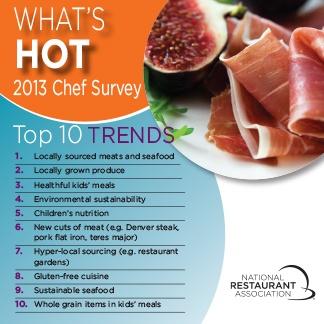

McDonald’s store sales just took another nose-dive. Global same store sales tanked more than three percent. One investment analyst entitled his analysis of McDonald’s prospective sales growth as “That’s not ketchup…it’s blood.”
The three stated reasons for McDonald’s sales declines were: competition; the company’s own missteps, including a TV story in China showing work associates mishandling chicken; and “shifting consumer tastes.” The harsh sales reality for McDonald's and other fast food retailers is that consumers increasingly associate eating their food with being fat and unhealthy. For the millennial generation focused on being “cool with a purpose,” the eating of fast food is definitely not cool or purposeful.
Fast food schizophrenia damages brand equity
The marketing of fast food is schizophrenic. Fast food used to be well understood by consumers as being cheap, tasty and convenient. Now the same fast food restaurant chain will run simultaneous schizophrenic ads where it promotes a healthy chicken wrap in one ad and its supersized hamburger loaded with bacon and cheese in another. This marketing schizophrenia only serves to undermine the customer’s understanding of the chain’s core values. In comparison, Chipotle’s stock continues to soar to record levels based on its singular marketing focus of selling sustainably-sourced, good food.
Fast food loses its price advantage
Fast food chains are also eroding their brand equity with ever-higher prices. Fast food prices, except for a rapidly-shrinking dollar menu, appear to be rising faster than wages. One study found that a healthy food diet was half the cost of a convenient food diet! If true, what is the future of the Big Mac if it is both unhealthy and not price competitive?
Fast food wages damage their brands
Wages are another economic issue damaging fast food brand equity. Who can live on the $8.69-an-hour core wages earned by front-line fast food workers? The answer is no one. The cost of public assistance to families of workers in the fast-food industry is nearly $7 billion per year. There is growing awareness among taxpayers that they are subsidizing, through taxes, the medical and welfare benefits paid to fast food workers -- where 52 percent of fast food family members are enrolled in tax-funded public programs, compared to the national workforce average of 25 percent.
Yet the fast food industry is fighting wage increases like it is a catastrophic economic event. Higher wages will undercut the dollar menu. Ironically, this may enhance fast food profits as most items on a dollar menu have thin -- if any -- profit margin. Paying a living wage of $15 per hour is only sustainable if a restaurant can win customers based on an alignment of values with value. How many fast food chains are succeeding in marketing themselves as selling healthy, tasty food at affordable prices? That question is the revenue growth challenge facing the fast food industry that is increasingly being shaped by informed customers using their smart phone apps to find healthy food served in a social environment. Maybe that is the core reason one fast food industry analysis is seeing blood and not ketchup.
Image credit: National Restaurant Association
Bill Roth is an economist and the Founder of Earth 2017. He coaches business owners and leaders on proven best practices in pricing, marketing and operations that make money and create a positive difference. His book, The Secret Green Sauce, profiles business case studies of pioneering best practices that are proven to win customers and grow product revenues. Follow him on Twitter: @earth2017
Stronger Local and Trans-border Policies Needed to Tackle Air Pollution
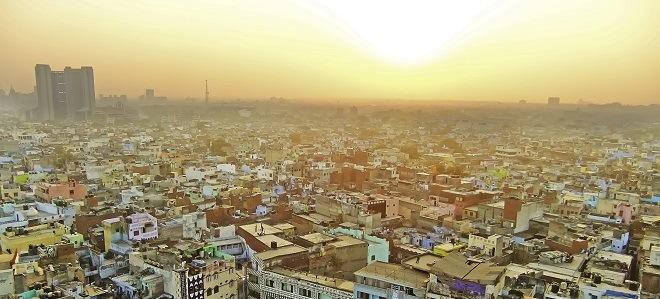

By Ibrahim Maiga
The World Health Organization (WHO) recently sounded the alarm about global air quality. In the 1,600 cities it monitors, only 12 percent of people breathe air that falls within its quality guidelines. In February of this year, the concentration of pollutants in the air in Beijing and Shanghai was more than 20 times WHO limits. But Delhi was the city found to have the world’s highest annual average concentration of PM2.5 – fine particulate matter measuring less than 2.5 microns, and considered the most harmful form of air pollution to human health, the WHO reported in May.
These are just the statistics we know about: The WHO recently told the Guardian some of the worst cities for air pollution “are not collecting data regularly."
The good news is that the policies and technologies that are needed to address the two main causes of all this air pollution – heavy industry and vehicles – have been tried and tested for decades now. “Effective policies restrict the amount [of pollutants] that various polluters can emit, and then companies have options about how they choose to do it," says Deborah Seligsohn, an environmental policy analyst specializing in China and India, based at the University of California, San Diego.
Vehicle emissions standards, for example, can be used to limit the emissions coming out of tailpipes. “You can do that by putting catalytic converters and particulate filters on vehicles," Seligsohn continues. “Or you can do it by running electric vehicles that eliminate all of the pollution directly from the tailpipe.” Similarly, scrubbers on power plants and switching to clean sources of electricity generation also reduce air pollutants.
Applying effective policy to effective solutions gains another layer of complexity due to the correlated but non-linear relationship between climate change mitigation and air quality improvement: Diesel, for example, emits less CO2 than petrol but is more of an air pollutant. In addition, the political motivation to deal with air pollution tends to relate to visible pollution, which is often very localized. Political impetus can fade along with the smog, though invisible pollutants may still remain in the air.
In South and East Asia, crossborder pollution also presents a challenge that can’t be dealt with on a purely national level. A small city-state like Singapore is in the midst of a region where only a handful of poorly-enforced air quality treaties exist. As such, it has proposed a tough new Transboundary Haze Bill, which would allow it to penalize companies beyond its borders – criminally, civilly, to the tune of $450,000 – for activities that generate haze over its territory. The main target of the bill is the slash-and-burn palm oil producers in neighboring Indonesia.
Part of the challenge facing Singapore is that, if pollution only flows one way, it is hard to incentivize the polluter to stop. Indonesia is also the only Association of Southeast Asian Nations (ASEAN) member country that is not a signatory to the legally-binding ASEAN Agreement on Transboundary Haze Pollution established in 2002. Nevertheless, the bill has found early support from the provincial government of Riau on the island of Sumatra, Indonesia, where many of the offending forest fires occur despite its ‘zero burn’ policy. Riau itself, as well as Kuala Lumpur, Malaysia, are also badly affected.
Monitoring technology continues to be central to establishing an evidence basis for reducing air pollution – particularly the invisible kind. Perhaps the most iconic example is the electron capture detector (ECD) invented by James Lovelock, the father of Gaia Theory, in the 1960s. He used the ECD to prove that invisible chlorofluorocarbon pollutants were blowing in seemingly clean air from the Atlantic to the west coast of Ireland.
Technological advances since then have increased our ability to identify levels and sources of pollution. Satellite monitoring technology, for instance, allows scientists to pinpoint ‘hot spots’ where forest fires occur. Google and NASA provided data for a study led by the University of Maryland and published in Science, that showed that annual forest loss in Indonesia doubled in 2011-2012, partly due to fires, whereas it halved in Brazil. However, without updated maps on land ownership, responsibility for addressing the fires cannot be established – information which Singapore has struggled to obtain from Indonesia and Malaysia.
In an example that further illustrates the importance of local context as well as modern monitoring technology, China has jumped ahead of its peers in terms of public scrutiny of pollution by mandating that 15,000 factories disclose their air emissions in real time. As part of its next five-year plan, beginning in 2016, it will also cap CO2 emissions.
Democratic countries can struggle to move as fast as China on these issues. The environment is rarely at the top of the electorate’s list of concerns, observes Seligsohn. And so (in the absence of bouts of smog to bump it up the agenda) it falls to campaigning organizations like Clean Air London to generate public pressure for political action. New crowdsourcing technology, like Air Casting, a device that connects to an app to aggregate air quality data, could also raise awareness. Prosecution might help too: The U.K. is facing the prospect of embarrassing court appearances and fines of up to £300 million a year, for its failure to meet the EU’s Air Quality Directive.
Perhaps this looming prospect is part of the reason why Transport for London (TfL) and London councils are partnering with Zipcar to expand the use of car clubs in the capital, and hopefully lessen the number of cars on the road. According to independent research commissioned by Zipcar, for every extra car made available by a car club at least 14 privately-owned cars are taken off the road. Car club members also make seven times fewer journeys of less than five miles than private car owners.
“Whereas a car owner is aware, either consciously or unconsciously, that they own an expensive depreciating asset, and are therefore motivated to get as much use out of it and value out of it as possible, when people join a car club they tend take a more portfolio approach to getting around," Mark Walker, General Manager, U.K., Zipcar explains.
Urban travel cards, such as London’s Oyster, could be used to open club car doors; scrappage schemes could offer free membership of a vehicle-sharing club; parking permit cost structures could act as disincentives to multiple-car ownership (e.g. the permit for the first car costs £150, while a second car costs £500).
The startup ParkatmyHouse (soon to be Just Park), which allows people to rent out their driveway as a parking spot, is also addressing the problem of drivers circling to find a free space. The company runs ChargeatmyHouse too, a website allowing the public to get electric vehicle (EV) charging points worth up to £1,500 installed in their driveway for free, courtesy of a subsidy from the Office for Low Emission Vehicles. This could help to address some the infrastructure barriers to EV adoption.
Established brands – and particularly those offering quick fixes, from personal inhalers and masks right through to low-emission vehicles – could also gain from taking a more prominent stance on air quality. If they are proposing a quick fix, surely they should also look to remedy the root cause?
Tom Morton, director of ClimateCare, makes the point that “companies that wish to take action to improve air quality should seriously consider offsetting their carbon emissions through innovative climate and development projects, which make a measurable and immediate difference on the ground, improving air quality and saving lives." Such projects, he says, can help to dramatically reduce air pollution at a local, household level – as in the case of ClimateCare’s Clean Cookstoves initiative, which aims to reduce the 2 million deaths caused each year by household air pollution from inefficient coal and biomass stoves.
Part of the problem with air is that we don’t see it. We breathe over 20,000 times a day, on average, but pay little attention to the steady rise and fall of our lungs – unless we are struggling to inhale, of course.
More research is needed into the economic impacts of poor air quality on health and productivity. Meanwhile, policy-makers need to pre-empt incidents of smog, not just react to them.
Ibrahim Maiga is a freelance journalist, writing about sustainability and entrepreneurship.
What This 3-D Printed Lip Balm Jar Means for the Future of Cosmetics Packaging


Millions of cosmetic tubes, jars, caps, wands and other hard-to-recycle packaging materials are sent to landfills each year. Not only do our personal care packaging disposal habits wreak havoc on our waste streams, they also ask us to consider: To what extent of environmental costs are we willing to pay in order to maintain our beauty routines?
The onus doesn’t simply fall on the consumer to re-think the way we toss our toiletries. Mass-market brands like LUSH Cosmetics, Cargo Cosmetics and Aveda that have concentrated their efforts on producing smarter and easy-to-recycle lines have demonstratively served both people and planet with their business models.
“Sustainability in the beauty sector is not new given the efforts of brands such as Aveda CPR, Unilever compressed deodorant can, and Cargo now discontinued PlantLove lipstick eco-friendly formula with biodegradable packaging,” explains Tina-Gaye Bernard, cosmetics industry marketing consultant, founder of Cocoa Chic Beauty and former director of marketing for brands such as L’Oreal, Sue Devitt Beauty and Clinque. “Cosmetic industry manufacturers will continue to pursue cost and earth efficient improvements.”
In 2011, Garnier partnered with free waste collection programs TerraCyle to divert a significant portion of its packaging waste from landfills. Through the partnership, Garnier works with Terracycle to allow salons and individuals to recycle their packaging through the Personal Care and Beauty Brigade program — a free recycling program for hair care, skin care, and cosmetic product packaging, as well as a fundraising opportunity for participants. To date, the program has collected over 4 billion units of packaging waste and has raised over $82,000 dollars for charities.
But what if there was another way that cosmetics companies could marry both quality packaging with earth-friendly principles?
When entrepreneur Anita Redd, who faced a challenge when the packaging for her natural skin care products--Anita’s Balm, was discontinued by her supplier, she found cohesive solace between her all-natural lip balm line and a biodegradable jar she crafted with a 3-D printer. The bump in her proverbial road turned out to be just the challenge she needed to re-think her mission of marketing high-quality, natural products with guilt-free packaging.
Her custom designed and printed jars are now patent pending.
Predictions in innovation
If a small business owner has the power to merge technological innovation with sustainable business practices, what is the call then to cosmetics giants like L’Oreal and Estee Lauder with deep budgets and talent capacity to pursue packaging innovation on a large scale?
According to Bernard, 3-D printing as a primary packaging option is viable: “More progressive adoption is contingent upon considerations such as formula stability, shelf life, and branding. It's not just the bottom line, product integrity and consumer experience are also critical measures that can't be compromised, particularly for mature brands with iconic favorites.”
Despite having been around since the 1980s, 3-D printed packaging, an industry expected to reach $3.1 billion worldwide by 2016, is just now hitting the masses -- showing up in a variety of retail locations including Amazon.com for as little as $300 for a personal home printer.
Widespread availability (and affordability for that matter) of printers has supercharged experimentation -- re-shaping and redefining design and prototyping in the process. Designers have since fashioned shoe collections; BMW now prints augmented thumbs to ease plant worker discomfort; and even the medical industry is experimenting with bioprinting of human organs.
Though experts predict that there will be no need to replace an entire industry with 3-D printers, the device alone presents several opportunities that could dramatically shift the way the cosmetics industry designs and manufactures products.
“Where the real development lies is in the development process for cosmetics containers. We can design and then produce models quickly and easily, stretching the design possibilities to new limits,” said Antoinette van den Berg, founder and head of Amsterdam-based design studio Future-Touch, in CosmeticsDesign.com. She goes on to submit that ecologically sounds practices in 3-D printing can also become inherent brand components. “Not only does this process cut down on the logistical elements involved in manufacturing several separate packaging components, it also allows us to work freely with eco-friendly materials such as bio plastics.”
Potential advantages could also include increased local sourcing of products and early entry for entrepreneurs with limited budgets.
Dramatically pivoting the cosmetics industry from traditional manufacturing practices to 3-D printing might still be too premature for the market. In this case, considering the possibilities is the first step towards technological exploration, adoption and waste reduction.
Sherrell Dorsey is a social impact branding and communications strategist, social entrepreneur and advocate for environmental, social and economic equity in underserved communities. Visit Sherrell at www.sherrelldosey.com and follow her on Twitter and Instagram @sherrell_dorsey.
'More Than Me Academy' Educates and Protects Vulnerable Girls in Liberia
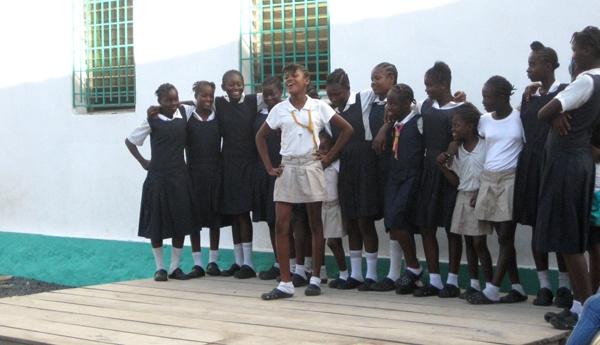

By Marianna Kerppola
As I entered the classroom, 26 girls between the ages of 10 and 18 chanted: “Welcome to More Than Me Academy. We are the girls of Power class, What is your name?” I answered “Marianna” and watched their charismatic teacher prompt the class to spell out my name phonetically as my heart melted.
More Than Me (MTM) Academy is a girls school in Monrovia, Liberia founded in September 2013. MTM enrolls 125 girls from a slum called West Point, a neighborhood known to have the highest rates of child prostitution in the country. MTM works towards making sure that “education and opportunity, not exploitation and poverty, define the lives of the most vulnerable girls from the West Point slum of Liberia.” Because of the 14-year civil war in Liberia, education has lagged for all children — but girls in particular. Most of the girls’ parents are illiterate, never having a chance to go to school while Charles Taylor pummeled the country. As a result, these families are stuck in a cycle of poverty, without the support of organizations, like MTM.
I traveled to More Than Me for my School of Natural Resources and Environment master’s project. My partner, a landscape architecture student, and I were tasked with redesigning the surrounding schoolyard of MTM. Tucked between the war-torn buildings in downtown Monrovia, MTM shines as a bright beacon of hope, painted in bright white, pink, yellow and green. However, the yard surrounding the schoolyard remains covered in sharp gravel, with traces of glass and metal shards. Passionate about community engagement, my partner and I decided to apply design thinking to our project to ensure that we designed for the MTM community needs, rather than our own presumptions. Still, before leaving for Liberia, we tried to scope the project to make sure we had some background information on possible solutions. Knowing the limited resources of MTM, we expected that we could offer the greatest benefit by installing solar panels, water catchment systems and a garden, so that MTM could offset its operational costs with renewable resources.
On our first day at at the academy, we interviewed Catherine, MTM operations manager, and quickly discovered that water and electricity make up less than a percent of their operational costs. Further, MTM did not plan to stay in their current building for more than five years. As a result, large investments in solar energy probably would not pay off. While food made up a larger portion of the MTM budget, there was scarcely enough land to grow food for five students, let alone all 125. With our initial assumptions so clearly negated, we learned to pivot and listen. Our next week was spent observing the community, interviewing staff and running workshops with the students.
We discovered that discipline issues escalated over the course of the day because students did not have enough space to play or to relax in between classes. We observed how the students primarily played in the front patio during recess — because it was the only area that offered shade. We were enchanted to see how the students loved the opportunity to perform and express themselves. These and many other impressions helped us realize that MTM didn’t need fancy engineering fixes, but rather an environment that helped them restore and explore.
Community development projects are often fraught with shifting goals and priorities. Yet I think these changes can be seen as positive turns for the project. Ernesto Sirolli, an expert in sustainable development, has a noteworthy TED Talk where he encourages aid workers to listen, rather than advise the people with whom they’re working. When we listen, we can offer more valuable support to communities. While this might change project priorities, we can be assured that the final outcome will be more meaningful and sustainable.
Today, Liberia is splashed across our newspaper headlines. In fact, West Point was quarantined for Ebola for 10 days last week. Yet even in the face of this deadly obstacle, MTM continues to protect its students and advocate for health services. Katie Meyler, founder of MTM, has spent the past week in West Point photo-documenting the impact of Ebola in the community. I was startled when I saw this picture of the main market in Monrovia — completely abandoned. I had seen the same market three months earlier filled with merchant stands and brightly-colored umbrellas. While Ebola has been a devastating shock, MTM has not let the situation sway them from their course to educate the girls of West Point. Instead, MTM staff, faculty, board members and donors have rallied to share ideas for how to further support and protect the girls. Thanks to their dedication and resilience, More Than Me will continue to help Liberian girls gain the self-confidence they need to speak up for themselves, and ultimately, help to transform their country.
Marianna is passionate about developing technology to enable businesses and consumers to make informed decisions about social and environmental issues transparently. She developed this passion through her undergraduate coursework at University of Chicago, where she saw that all too often poor social and environmental decisions were made due to inadequate information on the issue at hand. Prior to joining Erb, Marianna worked for Google, where she advised large advertisers on their digital marketing strategies. She also worked for Nationwide Insurance in corporate finance, investments, strategy and risk management. In her free time, Marianna writes fightingcancerwithsisu. blogspot.com, a blog about her mother’s fight against adrenal cancer.
Stories & Beer: Sept. 25 -- Positive Tourism


TriplePundit hosted a special "Stories and Beer" on Thursday, September 25 at 6:30 p.m. Pacific at the Impact HUB San Francisco - and online via webcam. We deviated from our usual format to bring you a series of presentations on positive tourism in honor of World Tourism Day (WTD).
In support of WTD, Altruvistas, Travel Massive and the Adventure Travel Trade Association (ATTA) combined forces to organize a special evening featuring an exciting line-up of speakers:
- Rodney Fong; Commission VP, San Francisco Planning Commission
- John Picard; Founder and CEO, John Picard and Associates
- Malia Everette; Founder and CEO, Altruvistas
Our event was volunteer-driven and benefited ECPAT, the leading global anti-child trafficking in tourism organization. We raffled off tours and giveaways to support this wonderful organization, with prizes from Hotwire, Russian River Adventures, Incredible Adventures, Localite Tours, Magic Bus Savor Oakland and more.
Join the WTD conversation on social media at #WTD2014, and join our conversation at #3pChat.
About our speakers:
Malía Everette, CEO of Altruvistas, promotes in-depth experiential education and socially responsible travel as an alternative to the type of “sun and fun” tourism that often results in cultural homogenization and does little to benefit local communities and host economies. From 1997-2012, Malía was the Director of Global Exchange’s Reality Tours program. After two decades of experience pioneering cultural and educational exchanges and ecotours for other organizations, foundations, educational institutions, and families, in 2013 she founded Altruvistas, a foundation and travel company to promote transformation philanthropy and social responsibility in the travel industry.
Sara Porter, Development Associate at ECPAT-USA. Sarah builds community partners, relationships, and resource development. Sarah has been engaged in anti-trafficking work since 2005, when she was in the Peace Corps in the Republic of Macedonia. After returning to the US, she worked within in the NYC foster care system and developed a training for social workers to help identify youth who may be commercially sexually exploited. She focused on the issue of human trafficking in graduate school, and interned in Ukraine at the anti-trafficking organization La Strada. After graduate school she researched women’s rights and child marriage for the United Nations Special Rapporteur for Human Rights in Iran, and then provided resource development for the International Rescue Committee. She has a Bachelor’s in Social Work from Western Michigan University, and a Master’s in International Affairs from Brooklyn College.
John Picard is an American architect, builder, entrepreneur as well as a building efficiency and sustainability expert. He is the Founder and CEO of John Picard & Associates, an environmental and sustainability consulting firm working with international clients. Picard was one of the first members of President Bill Clinton’s Greening of the White House team that developed environmental energy audits and innovative upgrade recommendations for the complex. This led to him becoming a founding member of the U.S. Green Building Council. In the early 1990s, he worked with corporations like Interface Inc. and The Gap to develop and implement pioneering environmental energy efficiency policies and operational systems to improve efficiency and productivity.Rodney Fong is a native San Franciscan and a third generation operator/owner of the world famous Wax Museum at Fisherman’s Wharf, where he served as President until it closed its doors after 50 years. He currently is the President of Fong Real Estate Company, LLC, overseeing the development and leasing of family properties, including the 100,000 square foot Wax Museum Entertainment Complex in the heart of historic Fisherman’s Wharf and 2001 Broadway Apartments.